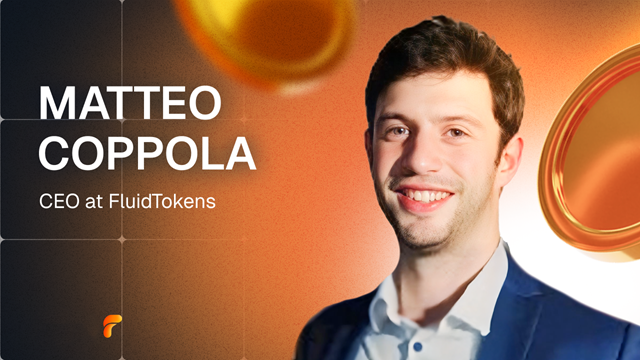FluidToken Expands DeFi on Cardano: CEO Matteo Coppola Shares His Vision for Growth

Cardano is not the first name that comes to mind when it comes to innovation in the DeFi space. However, FluidToken has been challenging this perception, focusing on core elements such as decentralization, fee stability, and long-term scalability.
The FluidToken project started with the Aquarium system, which makes Bitcoin usable in DeFi on Cardano. It introduced Babel fees, allowing users to pay transaction fees with any Cardano native token — including bridge Bitcoin — without using ADA. Next up is Midgard, a lightweight roll-up solution that aims to speed up transactions while maintaining Cardano’s security.
In this interview, we had the opportunity to speak with Matteo Coppola, CEO of FluidToken, to learn more about their vision, from a new lending protocol to their larger goals with Bitcoin and real-world assets.
Why Cardano?
BeInCrypto: Besides factors like low fees and stable uptime, what strategic benefits does Cardano bring to FluidToken that platforms like Ethereum don’t?
Matteo Coppola: Ethereum has had a first-mover advantage in the smart contract economy with its account model as the standard for many years. However, Cardano has kept the UTXO architecture from Bitcoin, extending it to support complex smart contracts. As the Web3 community struggles with the limitations of the account model, UTXO blockchains like Cardano offer an alternative.
Cardano not only provides FluidToken with a truly decentralized environment, but also helps connect assets between UTXO blockchains like Bitcoin. Cardano's community is also vibrant, not influenced by bots or fake transactions, but is truly built from the genuine interest of users.
FluidToken has been the leading DeFi ecosystem on Cardano since 2022, and we are proud to continue to grow, especially as we have deployed DeFi protocols on Bitcoin layer-1.
Babel Fees and User Experience
BeInCrypto: Aquarium's Babel fees introduce a new approach to user incentives. How did you design it and what behaviors do you hope it will incentivize?
Matteo Coppola: Blockchain is the core foundation of Web3, but users should not be burdened by technical details. The experience should be simple, secure, and seamless. This would be difficult to achieve if users had to own and manage ADA to make transactions.
Aquarium allows users to pay fees with custom tokens like stablecoins, which are completely decentralized. This simplifies the user experience, especially for those new to DeFi.
Aquarium also allows Bitcoin users to participate in DeFi activities on Cardano without having to own ADA, opening up huge potential for DeFi on the platform.
Midgard and Scalability
BeInCrypto: Midgard plays a key role in scaling FluidToken. Can you share how it will develop DeFi on Cardano?
Matteo Coppola: Midgard is a solution to improve the speed and cost of transactions on Cardano. We are working with Anastasia Labs to implement this project. The goal is to create a DeFi system that competes with traditional financial products.
Combined with Babel fees, the user experience on Cardano will become closer to traditional financial systems, while still maintaining its decentralization.
New Lending Protocol
BeInCrypto: FluidToken is developing a new lending protocol. What problems will it solve that other protocols haven't?
Matteo Coppola: The new protocol is designed to be very flexible to accommodate different types of loans. Lenders can customize everything from interest rates to repayment structures and even terms. This makes it easy for them to meet their specific needs.
Borrowers can search and request the best loans from around the world, all packaged in an intuitive interface, with automation support to optimize the process.
Bitcoin and Real-World Assets (RWA)
BeInCrypto: RWA has become an important keyword in DeFi. What do you think are the technical and legal requirements for RWA to really take off?
Matteo Coppola: The main challenge is that regulations are still unclear in many countries. We are developing DeFi products at FluidToken to prepare for changes in the industry, allowing RWA to be used as collateral in a secure and flexible way.
BeInCrypto: FluidToken is also focusing on bridging Bitcoin with DeFi. Can you share more about this development direction?
Matteo Coppola: In 2024, we launched BitWeave, a technological framework that allows DeFi protocols to be built directly on Bitcoin layer-1 without the need for bridges to other blockchains.
